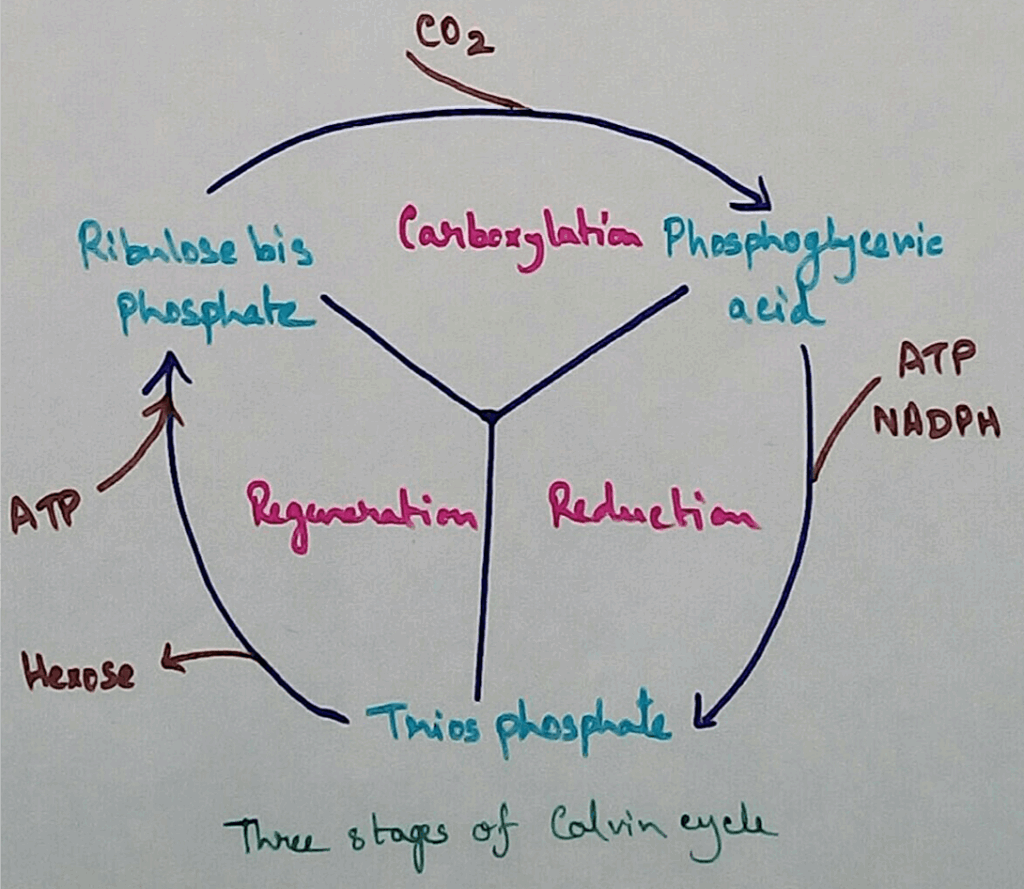The Calvin Cycle, also known as the light-independent reactions of photosynthesis, is a series of biochemical reactions that take place in the chloroplasts of plants. This cycle is crucial for converting carbon dioxide from the atmosphere into glucose, which is used as energy by the plant. The Calvin Cycle consists of three main stages: carbon fixation, reduction, and regeneration of RuBP.
The flow chart of the Calvin Cycle begins with carbon fixation, where carbon dioxide is combined with RuBP (ribulose-1,5-bisphosphate) by the enzyme rubisco. This forms an unstable 6-carbon compound, which immediately splits into two 3-carbon molecules known as 3-phosphoglycerate (3-PGA). Next, ATP and NADPH, which are produced during the light-dependent reactions of photosynthesis, are used to convert 3-PGA into glyceraldehyde-3-phosphate (G3P). Some of the G3P molecules are used to produce glucose, while others are used to regenerate RuBP to continue the cycle.
Flow Chart Of Calvin Cycle
Importance of Calvin Cycle
The Calvin Cycle is essential for the survival of plants and all living organisms that depend on them. It allows plants to capture and store energy from sunlight in the form of glucose, which is used for growth, reproduction, and metabolism. Without the Calvin Cycle, plants would not be able to produce the oxygen we breathe or the food we eat. Understanding the flow chart of the Calvin Cycle helps us appreciate the intricate processes that sustain life on Earth.
